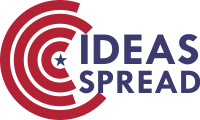The Cultivation of Quality and Ability of Environmental Design Professionals in Universities under the Digital Background
Abstract
Grasping the talent demand orientation and vigorously cultivating applied talents with practical and innovative abilities are in line with the professional talent training goals of universities in the digital age. Reflecting on the current talent cultivation system in the field of environmental design based on the school's own educational model and talent cultivation status, keeping pace with the times, following the laws of sustainable development, and exploring strategies for professional talent cultivation in the digital age is the historical mission of environmental art and design education. Actively adjusting the professional system, determining training objectives based on market demand, continuously reforming teaching methods, and restructuring the curriculum system, with the aim of enhancing students' innovative and practical abilities in the field of professional design, and solving the practical problems of graduates' employment and entrepreneurship difficulties.
References
[2] Zhao, X., Liu, L., et al. (2018). Practice and effectiveness of graduate education reform under the "Double First Class" strategy: Taking the discipline of Geological Resources and Geological Engineering at Southwest Petroleum University as an example. China Geological Education, (03), 36–30.
[3] Xu, Z. (2021). Exploring the path of cultivating environmental art and design talents under the integration of industry, academia and research. Chinese Handicraft, (01), 136–137.
[4] Zhu, M. (2012). Analysis of teaching reform in environmental art and design major. Jiangxi Education, (08), 20–22.
[5] Xu, Q. (2014, July). Landscape Design. Shanghai: Tongji University Press.
[6] Yuan, B. (2006). Analysis of the current situation and trends of teaching reform in Chinese universities: A report from the 2005 National Teaching Achievement Award. University Education Science, (04), 44–51.
[7] Qi, P., & Zhu, J. (2010). Adjustment of talent training objectives and implementation strategies for applied undergraduate colleges. Higher Education Forum, (06), 51–53+69.

This work is licensed under a Creative Commons Attribution 4.0 International License.
Copyright for this article is retained by the author(s), with first publication rights granted to the journal.
This is an open-access article distributed under the terms and conditions of the Creative Commons Attribution license (http://creativecommons.org/licenses/by/4.0/).








1.png)

















